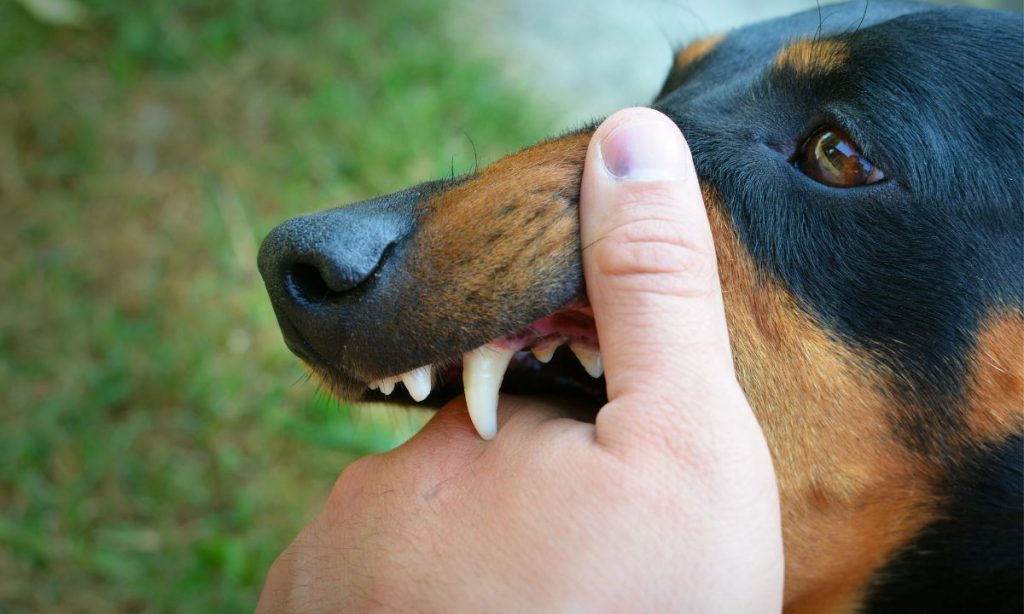Last Updated on February 28, 2024 by Dogs Vets
Importance of dog walks: Why Walking Your Dog is Crucial for Their Well-being
Let’s face it, life gets busy. Between work, errands, and social obligations, it’s easy to find yourself scrambling to fit everything in.
Sometimes, the first thing to get sacrificed is your furry friend’s daily walk. While an occasional missed walk might seem like no big deal, consistently skipping your dog’s walks can have significant consequences for their physical and mental well-being.
Introduction – importance of dog walks
As a responsible pet owner, it’s easy to get caught up in the busyness of life and overlook the importance of daily walks for our furry companions.
However, skipping your dog’s walk can have more significant consequences than you might realize. In this article, we will explore the various reasons why regular walks are crucial for your dog’s physical and mental well-being.
We will dive deep into why prioritizing your dog’s walks is more crucial than you might realize.
We’ll explore the physical and mental benefits of dog walking, address some common misconceptions about skipping walks, and provide tips on making walks a fun and manageable part of your daily routine.
The Physical Benefits of Dog Walks
Regular exercise is essential for maintaining a healthy weight and overall fitness, and the same goes for our four-legged friends.
Dogs need physical activity to burn off excess energy, prevent obesity, and keep their muscles strong. Daily walks help to improve cardiovascular health, strengthen bones, and promote better digestion.
Not only does regular exercise contribute to your dog’s physical well-being, but it also has a positive impact on their behavior.
Dogs who receive sufficient exercise are generally calmer, less prone to destructive behaviors, and better equipped to handle stress and anxiety.
Beyond Potty Breaks: The Importance of Dog Walks
Walking your dog is more than just a bathroom break; it’s an essential part of their overall health and happiness. Regular walks offer a plethora of benefits, including:
- Physical Exercise: Just like humans, dogs need exercise to stay healthy. Walks help maintain a healthy weight, strengthen muscles and bones, improve cardiovascular health, and boost their immune system.
- Mental Stimulation: Dogs are intelligent creatures who crave mental engagement. Walks provide them with the opportunity to explore new sights and smells, which helps keep their minds active and prevent boredom.
- Stress Relief: Walks are a fantastic stress reliever for both you and your dog. The physical activity releases endorphins, which have mood-boosting effects. Additionally, sniffing new environments can be incredibly calming for dogs.
- Socialization: Walks offer valuable socialization opportunities for your dog. Interacting with other dogs and people helps them develop proper social skills and confidence.
- Bonding Time: Daily walks are a fantastic way to strengthen the bond between you and your dog. It’s a dedicated time for you to connect, play, and shower them with love and attention.
Debunking Common Myths About Skipping Walks
There are several misconceptions surrounding the necessity of dog walks. Let’s address some of the most common ones:
- Myth: My dog has a fenced-in yard, so they don’t need walks.
Reality: While a backyard provides some space, it’s often not enough for adequate exercise and mental stimulation. Most backyards lack the variety of sights, smells, and social interaction that dogs crave during walks.
- Myth: I’m too busy to walk my dog every day.
Reality: Even a short, 15-minute walk is better than no walk at all. Consider incorporating shorter walks throughout the day or finding creative solutions, such as asking a friend, family member, or dog walker to help out.
- Myth: My dog is old and doesn’t need walks anymore.
Reality: Even senior dogs benefit from walks. The pace and duration can be adjusted to their specific needs, but regular walks can help maintain muscle mass, improve joint health, and even boost their cognitive function.
Making Walks a Fun and Manageable Routine
Here are some tips to make walks a fun and manageable part of your daily routine:
- Find a walking buddy: Enlist a friend, family member, or neighbor to join you on walks. This can make walks more enjoyable for both you and your dog, and it can help hold you accountable.
- Vary your walk route: Explore different paths, parks, and neighborhoods to keep your dog stimulated and engaged.
- Incorporate playtime: Make walks interactive by incorporating playtime with a ball, frisbee, or other favorite toy.
- Use positive reinforcement: Reward your dog with praise, treats, or pets for good behavior during walks. This will help them associate walks with positive experiences.
- Invest in the right equipment: A comfortable harness and leash will make walks more enjoyable for both you and your dog.
The Mental Stimulation of Dog Walks
Walking provides dogs with the opportunity to explore their surroundings, engage their senses, and satisfy their natural curiosity. The sights, sounds, and smells they encounter during a walk stimulate their minds and prevent boredom.
Mental stimulation is vital for preventing behavioral issues such as excessive barking, chewing, or digging.
Additionally, walking in different environments exposes dogs to new experiences, which helps to build their confidence and social skills.
Meeting other dogs, encountering different people, and navigating various terrains all contribute to a well-rounded and socially adaptable canine companion.
The Bonding Experience
Going for a walk with your dog is not just about physical exercise and mental stimulation; it’s also an excellent opportunity to strengthen the bond between you and your furry friend.
Walking side by side creates a sense of companionship and reinforces the trust and connection you share.
During walks, you can engage in training exercises, reinforce obedience commands, and practice leash manners. These interactions further enhance the bond between you and your dog while ensuring they remain well-behaved and responsive to your commands.
FAQs
1. How long should I walk my dog each day?
The duration of your dog’s walk depends on their age, breed, and overall health. As a general guideline, most dogs benefit from at least 30 minutes to an hour of exercise each day. However, high-energy breeds may require more prolonged and vigorous walks.
2. Can I substitute walks with other forms of exercise?
While walks are essential, they can be supplemented with other forms of exercise such as playtime, running, or swimming. The key is to provide your dog with a variety of physical activities to keep them mentally and physically stimulated.
3. What if I don’t have time for daily walks?
If your schedule is tight, consider hiring a dog walker or enlisting the help of a trusted friend or family member. Alternatively, you can break up your dog’s exercise into shorter sessions throughout the day to ensure they still receive the necessary physical activity.
4. My dog has health issues. Can they still go for walks?
It’s essential to consult with your veterinarian if your dog has any underlying health conditions. They can provide guidance on the appropriate exercise routine for your furry friend, taking into account their specific needs and limitations.
5. What if the weather is unfavorable?
While it’s important to prioritize your dog’s exercise, safety should always come first. If the weather conditions are extreme, such as during a heatwave or heavy storm, it’s best to keep your dog indoors and engage them in indoor activities to prevent any potential harm.
6. Can I walk my dog off-leash?
Off-leash walks can be enjoyable for dogs, but it’s crucial to ensure their safety and follow local regulations. Only allow off-leash walks in designated areas or secure spaces where your dog can roam freely without endangering themselves or others.
7. How often should I walk my dog?
The frequency and duration of walks depend on your dog’s breed, age, and overall health. However, most dogs benefit from at least one walk per day, with a minimum of 30 minutes for medium and large breeds.
8. What are some alternatives to walking my dog?
If you’re unable to walk your dog due to physical limitations, consider alternative activities like indoor playtime, puzzle toys, or hiring a dog walker.
9. Are there any benefits to hiring a professional dog walker?
A professional dog walker can provide your dog with regular exercise, socialization, and mental stimulation when you’re unable to do so. They are trained to handle different breeds and temperaments, ensuring that your dog receives the care and attention they need.
Conclusion
Skipping your dog’s walks might seem like a harmless time-saver, but the consequences can be significant.
By prioritizing daily walks, you’re not just providing your dog with a bathroom break, you’re investing in their physical and mental well-being, strengthening your bond, and creating lasting memories together.
So, grab that leash, head out the door, and enjoy the many benefits of walking your furry companion!
Remember, a happy and healthy dog is a rewarding companion, and walks are a fundamental part of achieving that.
Sources:
1. American Kennel Club – “The Importance of Exercise for Dogs” – https://www.akc.org/dog-owners/training/exercise/
2. The Spruce Pets – “The Benefits of Walking Your Dog” – https://www.thesprucepets.com/benefits-of-walking-your-dog-4580939
3. Petfinder – “Why Is Walking Your Dog So Important?” – https://www.petfinder.com/dogs/dog-care/importance-dog-walking/
4. Rover – “Why Walking Your Dog is Important for Both of You” – https://www.rover.com/blog/why-walking-your-dog-is-important-for-both-of-you/

















